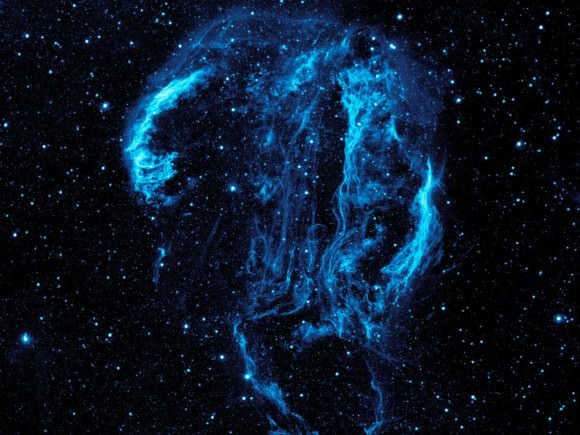You’re looking at an insanely beautiful image of the Cygnus Loop nebula captured by NASA’s Galaxy Evolution Explorer (GALEX) mission. Furthermore, this isn’t viewed in plain old visible light, this is high-energy ultraviolet light, revealing regions of hot gas remaining after a supernova detonated here 5,000 to 8,000 years ago.
In fact, the original supernova would have been bright enough to be visible with the unaided eye.
The Cygnus Loop Nebula, also known as W78 or Sharpless 103, is a huge emission nebula measuring more than 3° across. There are many smaller features inside the complex, like the Veil Nebula, the Western Veil (the Witch’s Broom), Eastern Veil and Pickering’s Triangle. Many will be familiar to astronomers and astrophotographers as they’re large and faint, and can only really be revealed with long exposure images in various narrowband filters.
Astronomers originally believed it was located about 2,500 light-years away, but according to newer research with the Hubble Space Telescope, they’ve pegged its distance at only 1,470 light-years away; and it now stretches across a distance of 90 light-years.
This extremely close distance is important. There are many supernova remnants like this, scattered across our galaxy, but none are so close, taking up such a vast region of our skies.
This view was captured by NASA’s GALEX mission, which launched in April 2003. Its main purpose was to image hundreds of thousands of galaxies, charting their rates of star formation – the science is best gathered in ultraviolet. Unfortunately, NASA cut off financial support for the mission back in February, 2011, but control might be transferred to the California Institute of Technology.
Source: Universe Today

No hay comentarios:
Publicar un comentario